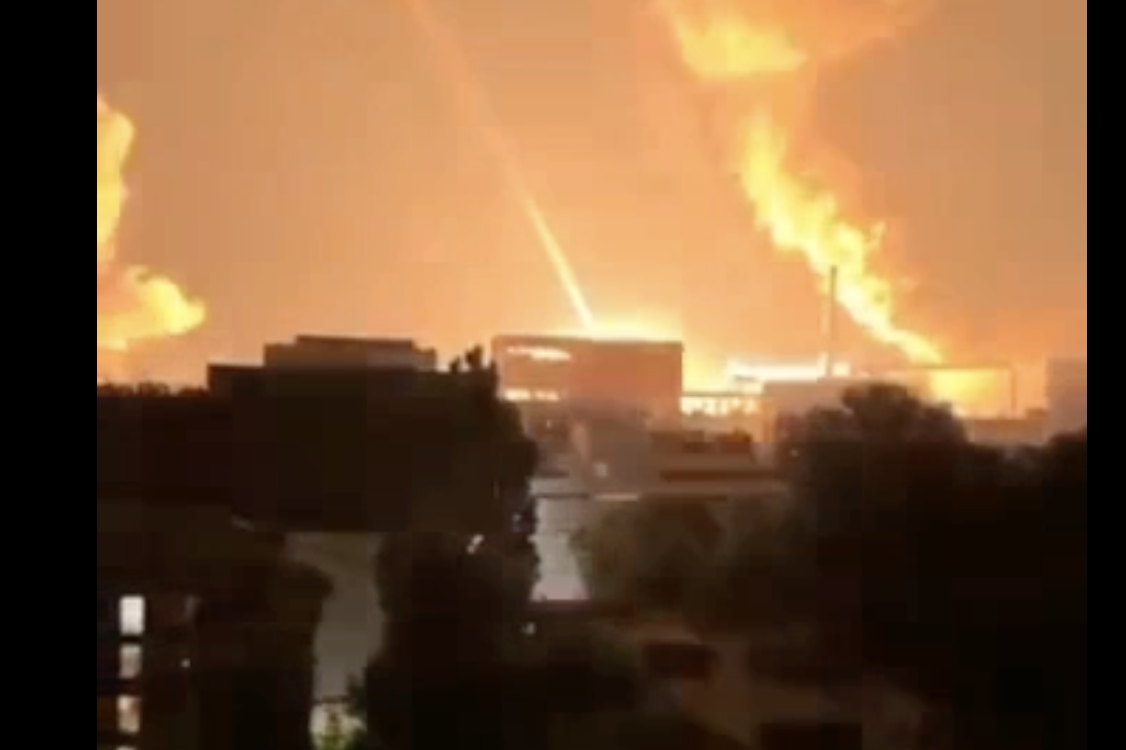Ukraine’s accelerating bombardment campaign targeting Russian military infrastructure with long-range drone swarms notched up its second success in three days, with a punishing strike torching a major ammunition dump in western Russia.
As least 20 Ukrainian robot aircraft targeted the 67th Arsenal of the Russian army’s Main Rocket Artillery Directorate (GRAU), a major munitions storage site for Kremlin forces operating in northern Ukraine and in Russia’s Kursk region – which Ukrainian troops invaded in August.
JOIN US ON TELEGRAM
Follow our coverage of the war on the @Kyivpost_official.
Kremlin statements claimed all 24 Ukrainian aircraft observed above Russia’s western Bryansk region were shot down in the early hours of Wednesday and reported no damage from drone attacks.
A mass of other sources – among them a key Russian government agency – reported an effective strike had punched through local air defenses and had ignited fires that were detonating stored ammunition hours later.
Audio recordings and video images published on Russian social media associated with the Bryansk region and Karachev, a town near the ammunition depot, painted a picture of multiple, powerful ground explosions followed by countless smaller detonations similar in sound to ammunition cooking off. The independent Russian news platform Astra, citing video geolocated to Karachevo and local residents’ accounts, reported explosions continuing without a break from the direction of the base for at least an hour.

Ukraine Critic and Trump Loyalist Matt Gaetz Withdraws Nomination as US Attorney General

The munitions storage site is some 140-150 kilometers (87-93 miles) distant from probable launch locations in Ukraine’s northern Chernihiv region and contains more than one hundred warehouse-type buildings. The base is well within the range of domestically manufactured strike drones in mass production in Ukraine since late summer, capable of hitting targets beyond 1,000 kilometers (621 miles).
Audio and video images published on Russian social media associated with the Bryansk region recorded powerful ground explosions followed by countless smaller detonations similar in sound to ammunition cooking off.
The independent Russian news platform Astra, citing video geolocated to Karachev and local residents’ accounts, reported explosions continuing without a break from the vicinity of the base, for at least an hour.
Ukraine’s General Staff on Wednesday confirmed the strike and stated ammunition stored there was hit but offered no information on the scale of damage. Munitions sent to Russia from North Korea, artillery missiles, and guided aerial bombs were stored at the site – some out in the open – when the Ukrainian drones struck, the army statement said.
NASA open-source satellite images accessed by Kyiv Post at midday on Wednesday, some ten hours after the Ukrainian attack, showed no hot spots typical of major fires in the vicinity of the Karachevskiy base. The worldwide space-based fire watch network sometimes detects major fires only a day or more after a blaze breaks out, but Russian official sources reported firefighting units responded to the scene quickly.

Emergency response teams and firemen were still on the scene by midday on Wednesday, but civilians living near the storage site should still stay inside their homes because of the danger of explosions, Russia’s Ministry of Emergency Situations (RMES) in a Wednesday statement said.
The agency declared the area around Karachev a regional-level public emergency subject to military law. Contradicting Defense Ministry reports telling Russians the strike was ineffective, the RMES statement blamed drones for the fires and explosions.
A statement from Ukraine’s recently created Unmanned Systems Forces (SBS) command said the Russian base also contained munitions sent to Russia from Iran. Ukrainian robot planes will target major Russian ammunition dumps in the future, an SBS statement said.
“There are not many similar facilities [like the Karachev base] – approximately two dozen in the entire territory of the Russian Federation, each of which stores tens of thousands of tons of ammunition. Unmanned Systems Forces will continue to undermine the offensive potential of the enemy, to bring our victory closer,” the statement said in part.
Ukraine’s army in July became one of the first in the world to create a separate professional branch, the SBS, specializing in drone production and operations.
In mid-August Ukraine’s military and special operations forces kicked off a long-range strike campaign using domestically manufactured drones and targeting primarily Russian ammunition depots and oil processing and storage infrastructure.
The Wednesday SBS strike against the Karachev arsenal came three days after kamikaze drones penetrated air defenses around the city of Feodosia, in the southeast of the Russia-occupied Crimea peninsula, setting the territory’s main oil refinery and fuel storage base ablaze.
Fires from the Monday attack – which Moscow-loyal local officials blamed on falling debris from a single drone shot down by Russian air defenses – were, by Wednesday, well on their way to engulfing the base, having burned out or blown up about one-third of the refinery’s storage reservoirs, satellite imagery reviewed by Kyiv Post showed.
The Feodosia fires were still burning on Wednesday and more than 1,100 people living near the refinery had, to date, been forced to evacuate their homes because of smoke, approaching flames and high Sulphur content in the air, Nataliya Penkovskya, Crimea Director of the Russian government consumer protection agency Rospotrebnadzor said in a statement.
Ukraine’s most damaging drone strike ever hit an ammunition dump in Russia’s central Tver region on Sept. 19, detonating bunkers and sparking fires that burned for more than week.
Russian officials initially claimed the attack caused no damage and that the fire was caused by falling debris from shot-down drones.
But local accounts and subsequent satellite imagery showed explosions had leveled the site and possibly destroyed between 20-40,000 tons of ammunition destined to be fired in Ukraine. Some blasts were powerful enough to register as low-grade earthquakes.
According to the web magazine The Insider, aside from the devastating Sept. 19 attack, Ukrainian drones hit an ammo depot in Russia’s Voronezh region on Aug. 24 and Sept. 7, a warehouse near Mariupol on Sept. 13, a warehouse in the southwestern Krasnodar region and a major ammo dump (again) in the Tver region on Sept. 21.
According to open-source satellite imagery, one strike – an ambitious drone raid targeting an ammo storage base in Russia’s southcentral Volgograd region on Sept. 29 – failed to score useful hits.
The Insider report said that most of the time the Ukrainian drone strikes are effective against fixed targets like ammunition depots and oil refineries, and that Russian air defenses have limited means to stop future drone attacks.
You can also highlight the text and press Ctrl + Enter






